Brazilian Dutchman’s Pipe, also known as Giant Dutchman’s Pipe, Giant Pelican Flower, or Giant Pipevine, is a striking plant belonging to the Aristolochiaceae family. Its botanical name is Aristolochia gigantea, and it is native to Central America and Brazil. This woody vine is celebrated for its large, distinctive flowers that resemble the meerschaum pipes traditionally used in the Netherlands, which inspired its common name.
The plant is part of the Aristolochia genus and the gigantea species, making it a fascinating addition to any garden or landscape. While its vibrant blooms can attract pipevine swallowtail butterflies to lay their eggs, gardeners should be aware that the plant’s leaves are toxic to the larvae, often causing them to perish shortly after ingestion.
| Common name | Brazilian Dutchman’s Pipe, Giant Dutchman’s Pipe, Giant Pelican Flower, Giant Pipevine |
| Botanical name | Aristolochia gigantea |
| Family | Aristolochiaceae |
| Genus | Aristolochia |
| Species | gigantea |
| Origin | Central America and Brazil |
| Life cycle | Woody |
| Plant type | Vine |
| Hardiness zone | 10, 11 |
| Sunlight | Full Sun |
| Maintenance | Low |
| Soil condition | Loam |
| Soil ph | Neutral |
| Drainage | Well-Drained |
| Growth rate | Fast |
| Spacing | 6 – ft. – 12 ft. |
| Harvest time | Fall |
| Flowering period | Summer |
| Height | 15 ft. – 20 ft. |
| Flower color | Cream, Tan |
| Leaf color | Green |
| Fruit color | Brown, Copper |
| Fruit type | Capsule |
| Leaf benefit | Fragrant |
| Flower benefit | Showy |
| Garden style | Pollinator Garden |
| Uses | Container |
I. Appearance and Characteristics
Aristolochia gigantea, the Brazilian Dutchman’s pipe or giant pelican flower (syn. Aristolochia sylvicola Standl.), is an ornamental plant native to Brazil. This plant is cited in Flora Brasiliensis by Carl Friedrich Philipp von Martius. A. gigantea and other tropical Dutchman’s pipe varieties pose a threat to the pipevine swallowtail butterfly. The butterfly confuses A. gigantea with its native host plant and will lay eggs on it although pipevine swallowtail caterpillars cannot survive on the foliage.
They are fast-growing and vigorous climbers that can reach up to 10 metes in height, climbing on trellises or supporting structures. Giant Dutchman’s pipe has large, heart-shaped leaves that are dark green and glossy, which makes them a beautiful backdrop for the stunning blooms that emerge during the summer months.
The flowers are truly unique in their appearance, and they resemble a Dutchman’s pipe, which is where the name of the plant comes from. The blooms are brownish-purple in color with whitish-yellow veins, and can grow up to 30 cm tall and 15 cm wide, making them a true showstopper in any garden. The flowers have a strong, unpleasant odor, attracting flies and insects that help pollinate the plant.
Due to the arrangement of hairs in the perianth tube, the insects are temporarily trapped inside the flower so that the pollen they carry can be transferred to the flower. This also gives the flower enough time to transfer pollen onto the insect’s body. After a while, the hairs in the perianth tube relax, allowing the insect to fly away.
Once pollinated, the Giant Dutchman’s pipe flower produces cylindrical seed capsules that are about 10 cm long. After maturing, the seed capsules open up to release small, flattened, winged seeds that are dispersed by wind.
In cultivation in the UK – where it must be grown under glass – this plant has gained the Royal Horticultural Society’s Award of Garden Merit. It does not tolerate temperatures below 10 °C (50 °F). It can be grown from seeds or cuttings.
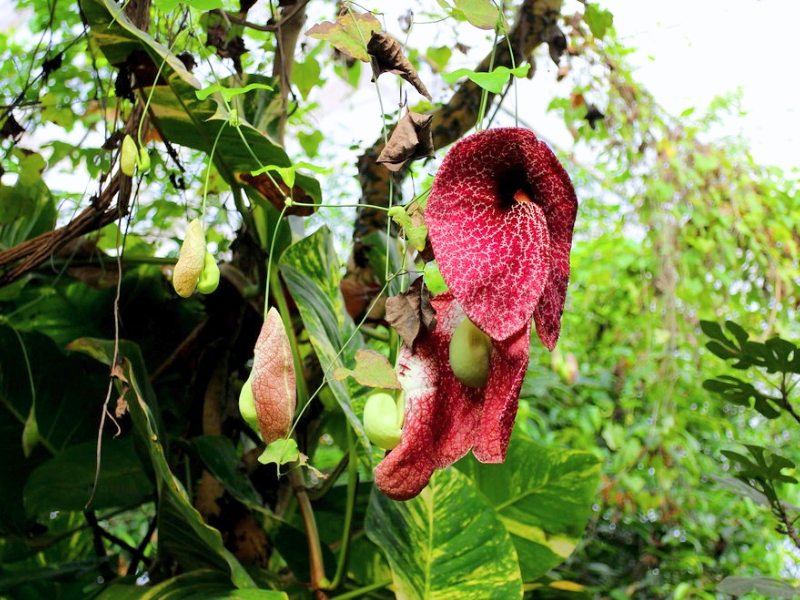
II. How to Grow and Care
Giant dutchmans pipe typically thrives with minimal attention, making it suitable for gardeners of all levels. It requires a warm, humid environment and well-draining soil to flourish. Special care must be given to support its robust climbing habit, as giant dutchmans pipe can grow quite large and needs sturdy structures to cling to. Additionally, regular watering is crucial, but be careful not to overwater, as giant dutchmans pipe is sensitive to soggy soil conditions.
Sunlight
Dutchman’s pipe vine tolerates full sun or partial shade but blooming tends to be more prolific in full sun. The exception is extremely hot climates, where a little afternoon shade is appreciated.
Watering
Native to the tropical regions, giant dutchmans pipe thrives in humid environments where it can absorb ample moisture. This species is drought-tolerant yet favors consistent humidity for optimal growth. Watering should align with its natural preference, hence giant dutchmans pipe requires watering every week. As an evergreen vine known for its large, ornate flowers, giant dutchmans pipe flourishes outdoors where it can receive both rain and ambient moisture, making it a stunning addition to any garden that can mimic these conditions.
Fertilizing
To foster robust growth and vibrant flowering in giant dutchmans pipe, employ balanced fertilizers monthly during the growing season. The right dose is crucial; follow the product’s label for dilution rates to avoid over-fertilization, which can harm giant dutchmans pipe. As the giant dutchmans pipe’s growth slows in cooler months, it reduces fertilization frequency. Use a well-diluted, balanced liquid fertilizer to promote steady nutrition without overwhelming the giant dutchmans pipe. For effective application, ensure soil is moist. Seasonal adjustments—less in winter, more in active summer growth—optimize giant dutchmans pipe’s health.
Pruning
Prune Dutchman’s pipe vine whenever it gets unruly. The vine will rebound, although flowering may be slowed for a short time.
Propagation
Propagation is through seeds and stem cuttings. If you’re starting from seeds, it’s best to plant them in a well-draining soil mix and to keep them warm and moist until they germinate. Once the seedlings have emerged, you can transplant them into larger pots or into the garden.
If you’re propagating through cuttings, it’s best to take them in the spring or summer, when the plant is actively growing. Simply take a cutting that is around 4-6 inches in length and remove the leaves from the bottom half. Then, dip the cut end of the stem in rooting hormone and plant it in a well-draining soil mix.
Transplanting
The perfect time for relocating giant dutchmans pipe is during the autumn months, as this allows the plant ample time to establish its roots before the growing season. A location with rich, well-drained soil and partial to full sun exposure is ideal. Pro-tip – Ensure proper spacing due to giant dutchmans pipe’s fast growth.
Pests and Diseases
Watch for mealybugs and spider mites. Both are easily treated with insecticidal soap spray.
III. Swallowtail Butterflies and Dutchman’s Pipe Varieties
Dutchman’s pipe vine attracts bees, birds, and butterflies, including swallowtail pipeline butterflies. However, some sources indicate the tropical giant Dutchman’s pipevine may be toxic for some butterfly species.
If you’re interested in attracting butterflies to your garden, you may want to consider planting the following Dutchman’s pipe alternatives instead:
- Desert pipe vine – suitable for USDA zones 9a and above
- White-veined Dutchman’s pipe – zones 7a to 9b
- California pipe vine – zones 8a to 10b
Find Where to Buy the Best Giant Dutchman’s Pipe (Aristolochia gigantea)

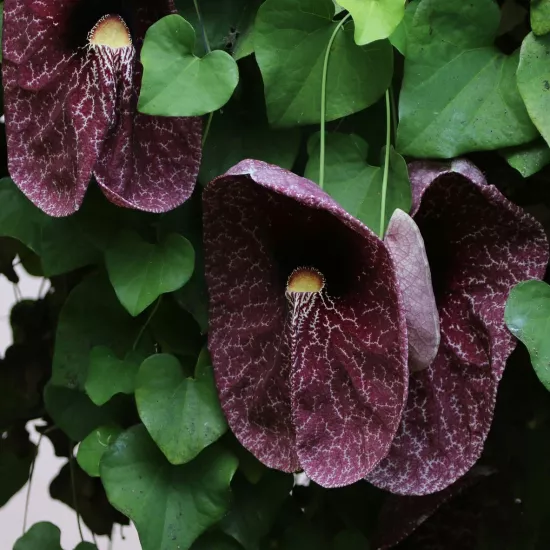








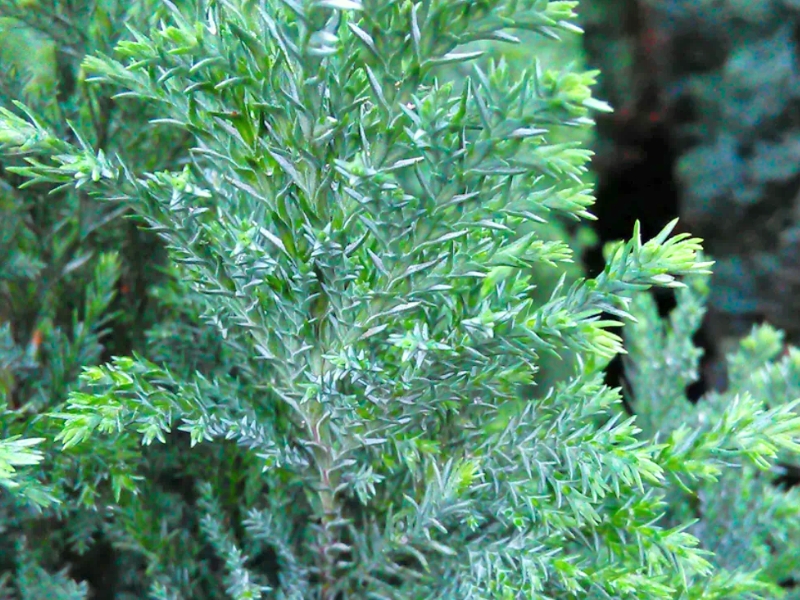
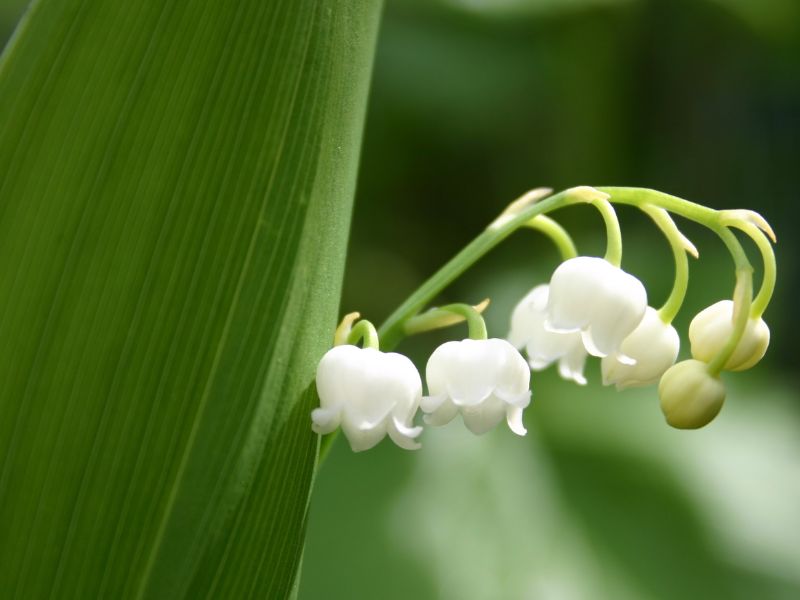
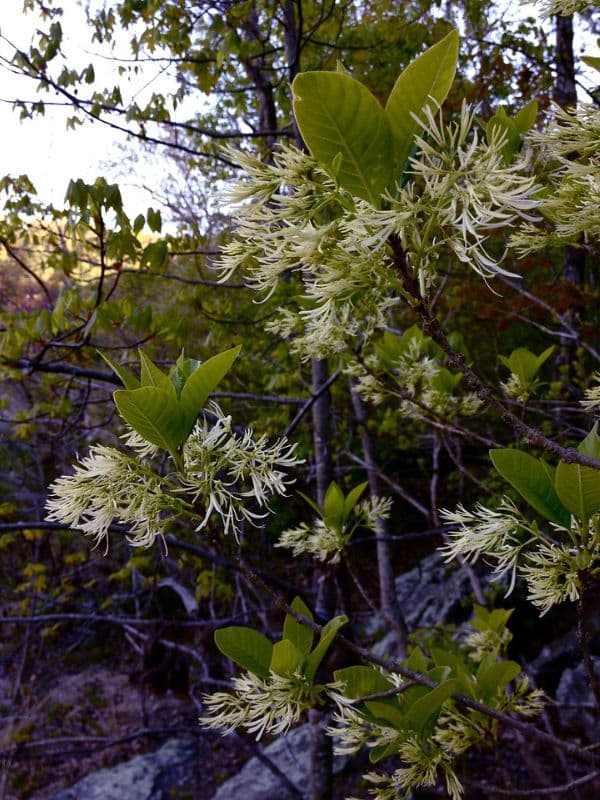
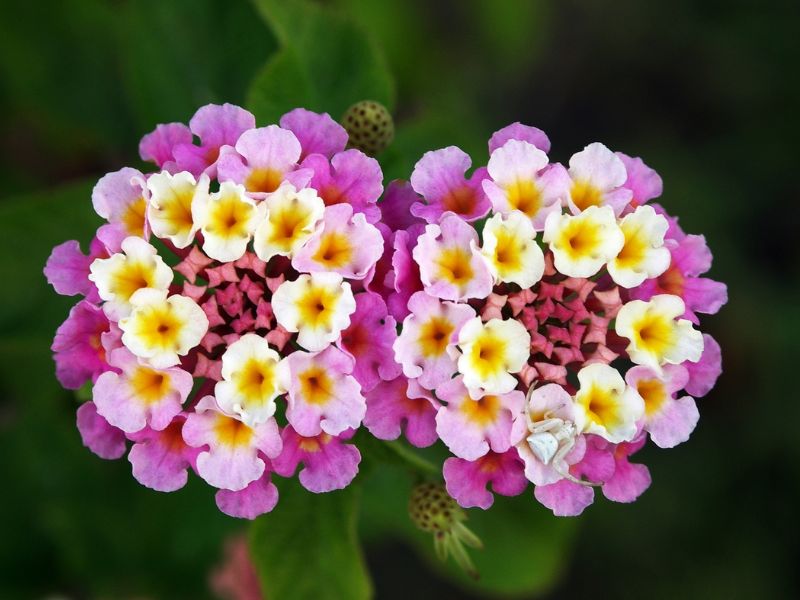
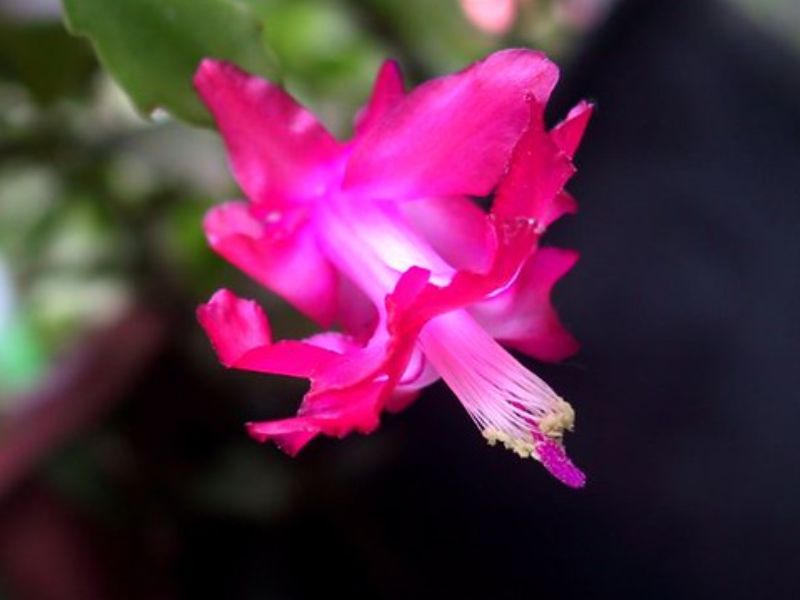
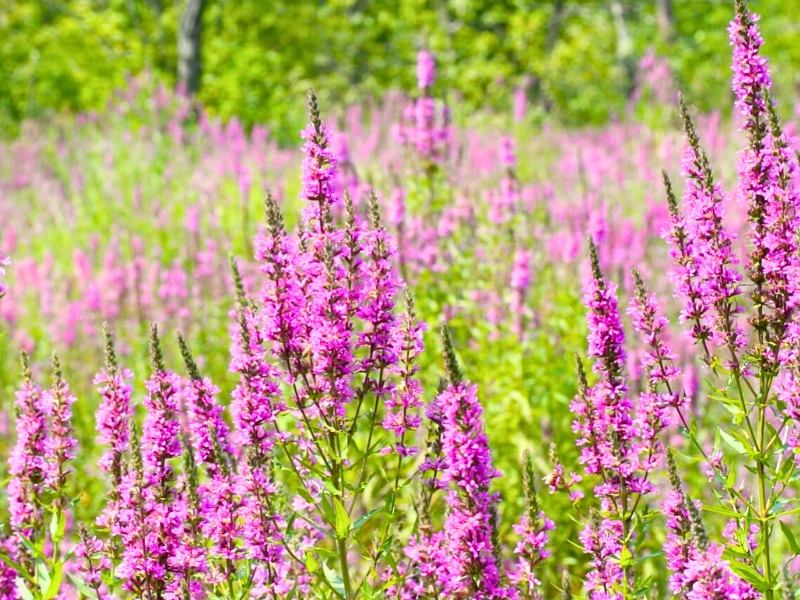
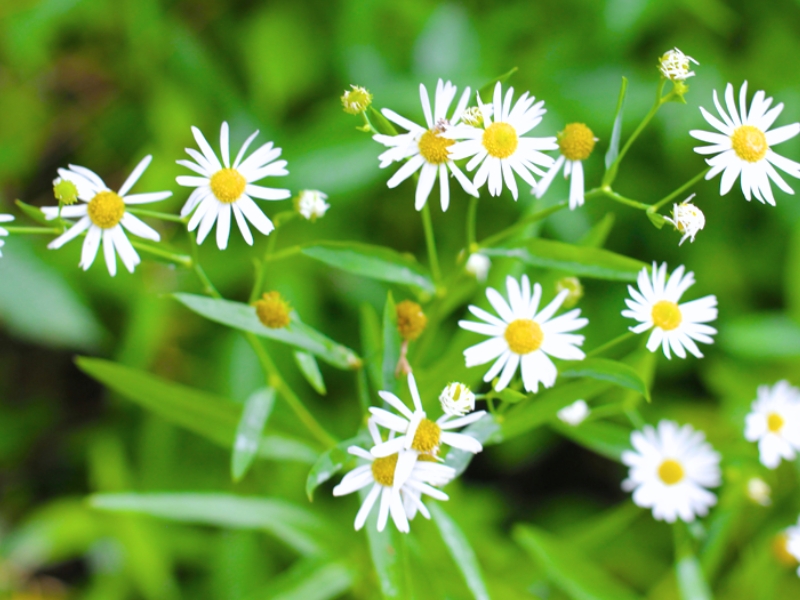
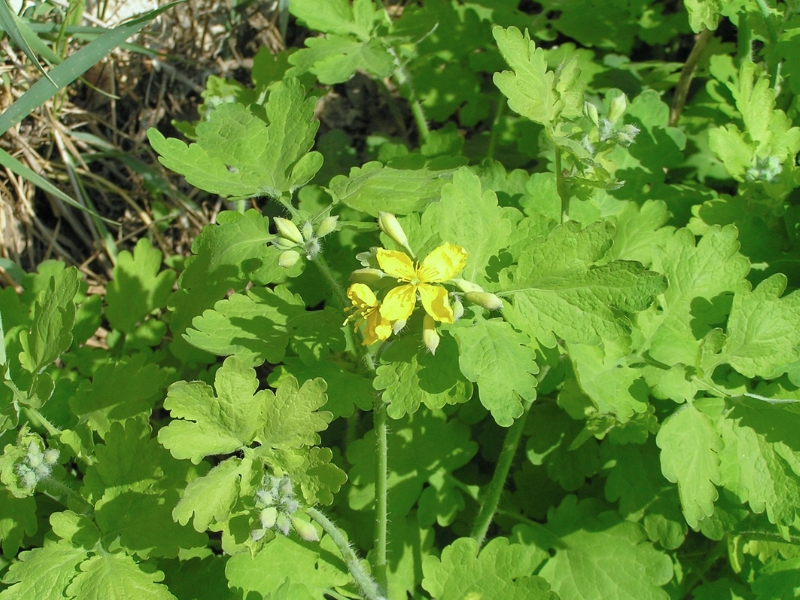
Leave a Reply